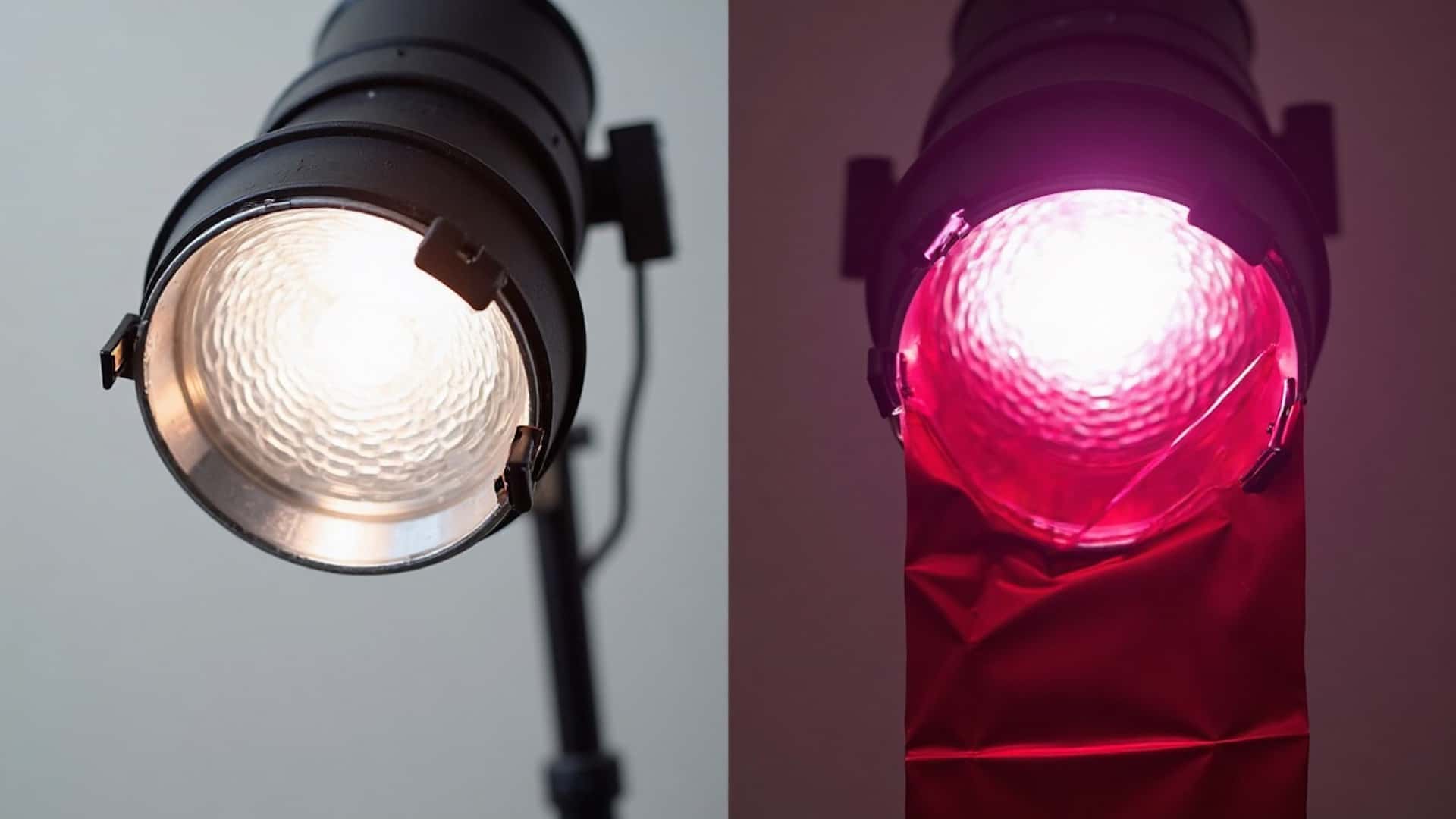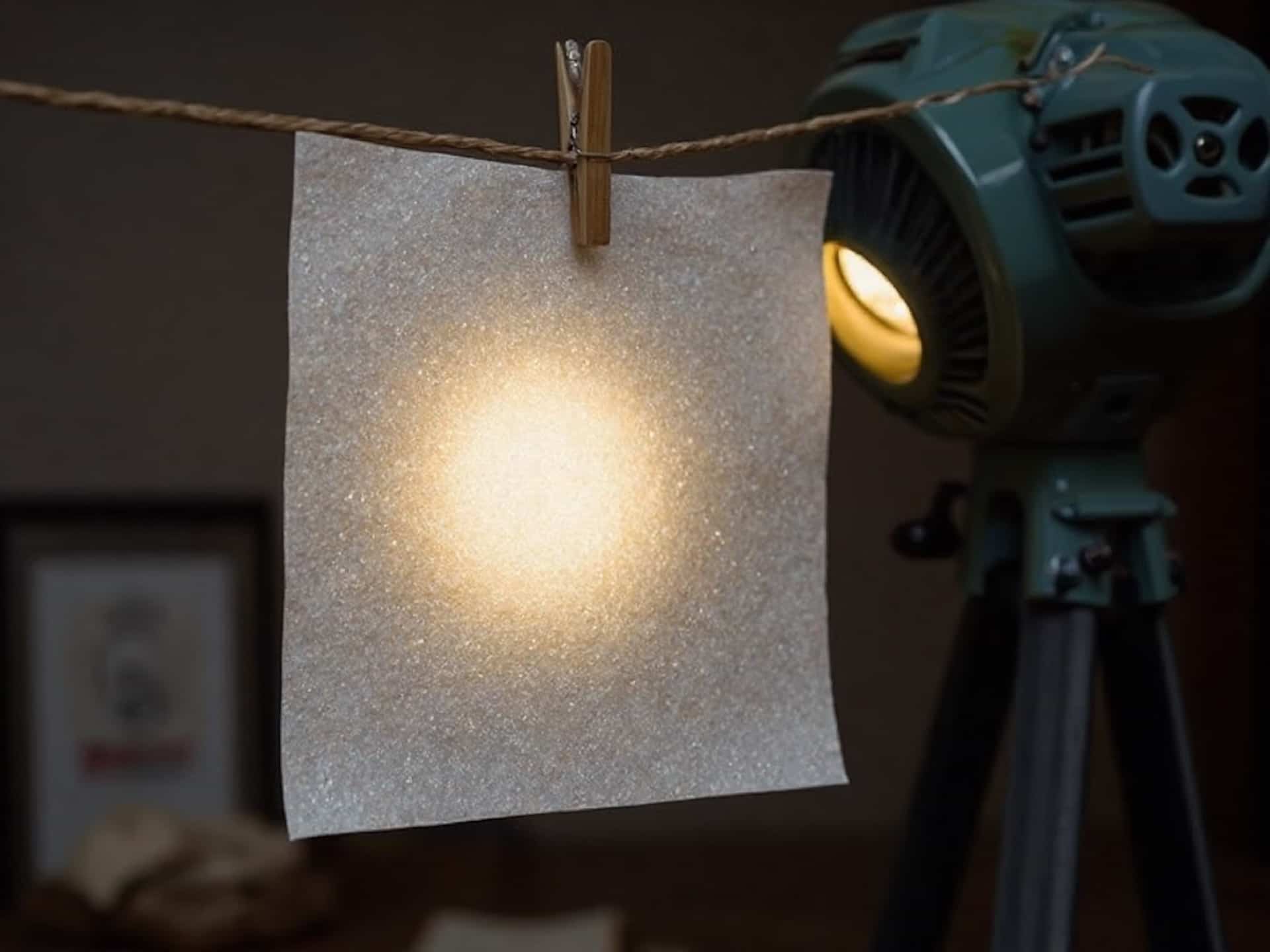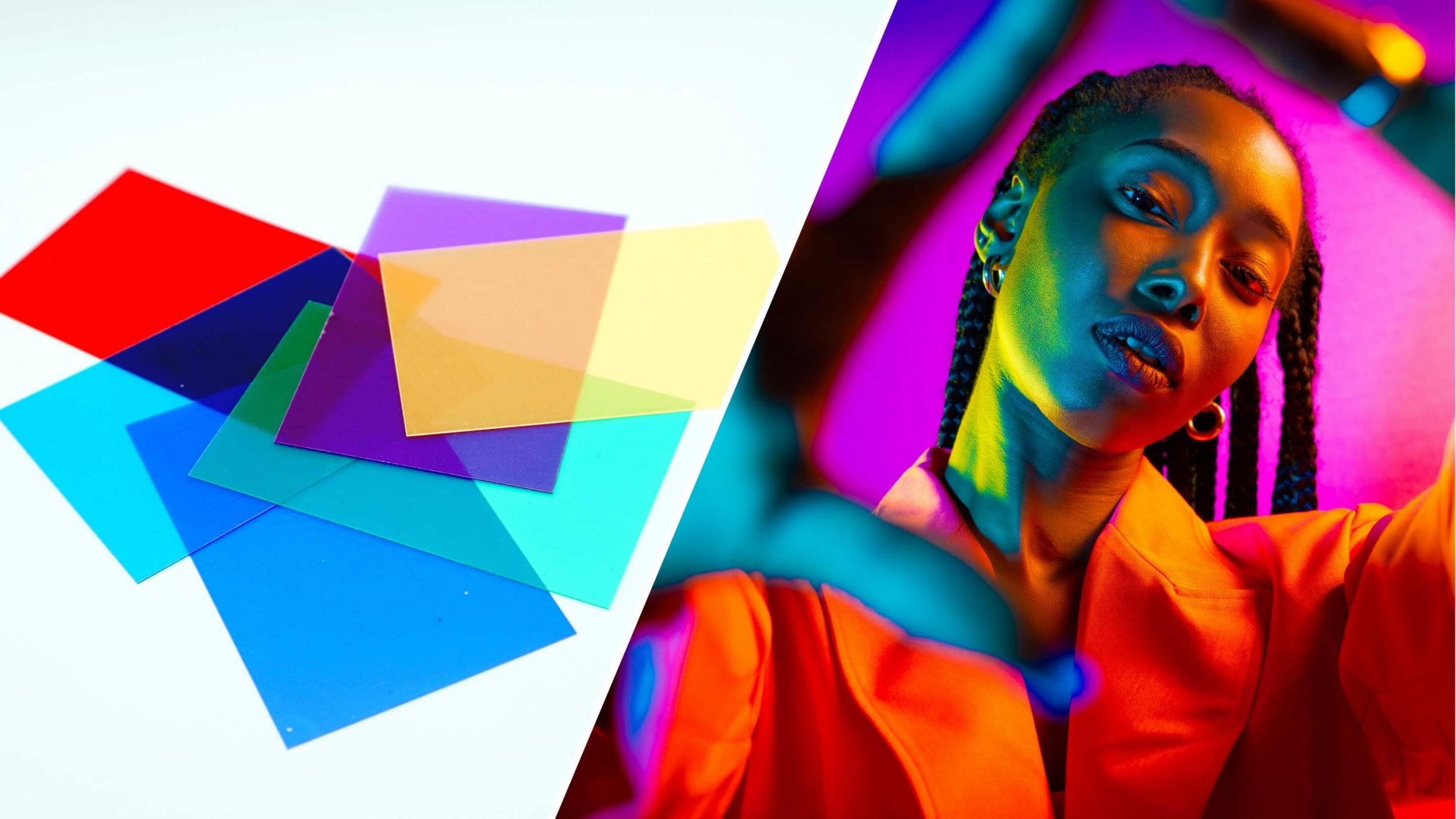In the world of photography and cinematography, gels play a pivotal role behind the scenes of great lighting. Gels subtly transform a scene’s visual palette, evoking emotions and creating a mood. But what exactly are these gels we speak of? How do cinematographers, photographers, and gaffers use them?
What are Gels in Lighting
First, let’s define gel
Before we delve into the specifics of how gels are used, let's first define what a gel is in the context of photography and cinematography.
GEL DEFINITION
What are gels in lighting?
In the realm of photography and cinematography, lighting gels are thin, transparent, colored materials, typically made from polyester or polycarbonate. They're primarily used to alter the color and quality of light in a scene. When we say 'gels,' we're referring to these sheets of magic that can drastically transform an image or video by modifying the light source's color.
The use of gels traces back to the early days of theater and stage performances, long before they found their place in cinema and photography. Originally, gels were made from gelatin (hence the name), which was dyed various colors. As technology advanced, more durable materials replaced gelatin, and gels became a staple tool for photographers and cinematographers alike.
Types of Film Gels:
- Color Gels
- Diffusion Gels
- Neutral Density Gels
- Correction Gels
What are Gels in Lighting Used For?
Types of gels in lighting
Gels are essential tools in photography and cinematography, giving artists the power to control light color, intensity, and quality. Let's explore the different types of gels used in lighting and discover their distinct characteristics.
Color Gels
Color gels are probably the most common type of gels you'll come across. They're used to add vibrant hues to a scene, transforming the mood and atmosphere. By placing these gels over lights, photographers and cinematographers can create a range of effects — from a warm, sunset glow with an orange gel to a moonlit night with a blue gel.

Color Gels for Lighting
Diffusion Gels
Diffusion gels are all about softening and spreading light. By scattering the light source, they help create diffused light, reduce harsh shadows and create a more flattering light for subjects.
This makes diffusion gels particularly popular in portrait photography and scenes that require a softer, more naturalistic light.

Diffusion Gels in Lighting
Neutral Density (ND) Gels
Neutral Density gels, often referred to as ND gels, are designed to reduce the light's intensity without altering its color. They're like sunglasses for your lights — cutting down the brightness while maintaining the same color temperature. ND gels are handy when you need to balance the exposure between different light sources or reduce the light output from a particularly bright source.
Neutral Density gels in Film Lab
Correction Gels
Correction gels are used to adjust the color temperature of a light source to match other sources within a scene. For example, if you're shooting indoors with tungsten lights (which produce a warm, yellowish light) and want to incorporate daylight coming through a window (which is cooler, bluer light), you could use a correction gel on the tungsten lights to balance the temperatures.
Flash Gels for Color Correction
To truly master lighting in photography and cinematography, it's crucial to grasp the various types of gels and how they can be used. These gels are powerful tools that allow you to shape and manipulate light in countless ways, adding depth and impact to your visual storytelling.
Color, shadow, and highlights are all essential elements in creating a captivating image, and gels give you the power to control them all.
Related Posts
What are Gels in Lighting Used For?
How gels alter the scene
Think of gels as filters for your lights. Just like how a pair of sunglasses can change your perception of a sunny day, gels can alter the way a light source is perceived in an image or film.
They can adjust the color, quality, and intensity of light, allowing photographers and cinematographers to control these elements with precision. It's not merely about adding color; it's about creating an atmosphere, setting a mood, and telling a story through light. And just like a good film or photograph, it's all in the details.
Setting the Mood
A scene's mood can dramatically shift with the use of gels. Imagine a room bathed in a soft, warm glow that instantly evokes a sense of nostalgia or a harsh, cold blue light that creates a sense of unease or alienation.
In this video, we break down the importance of color in mood and storytelling through the work and palette of David Fincher.
Color in David Fincher Movies • Subscribe on YouTube
Gels enable artists like Fincher to paint with light, using color theory to evoke emotions and enhance the narrative. It's this ability to manipulate mood and tone that makes gels a vital tool in the creative toolbox.
Technical Aspects
While the creative possibilities of gels are exciting, their use also involves some technical know-how. One aspect is understanding color temperature. Different light sources have different color temperatures, measured in Kelvin (K).
For instance, daylight is around 5600K and is relatively cool or blue, while a standard tungsten bulb is around 3200K and emits a warmer, yellowish light. In this video breakdown, we analyze the science and use of color temperature in lighting.
Color in David Fincher Movies • Subscribe on YouTube
Gels can adjust these color temperatures to match or contrast each other, depending on the desired effect. For instance, applying a blue gel to a tungsten light can make it match the color temperature of daylight.
Up Next
How to Use Color in Film
Now that we've examined the roles and effects of gels in lighting, let’s explore how color manipulation can significantly influence a film's visual narrative and emotional impact.
Up Next: Color in Film →
Showcase your vision with elegant shot lists and storyboards.
Create robust and customizable shot lists. Upload images to make storyboards and slideshows.
